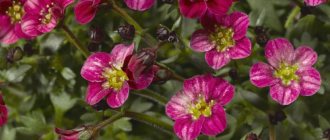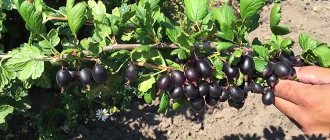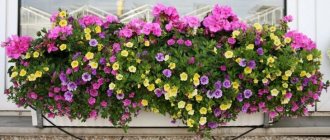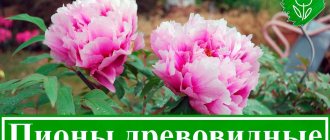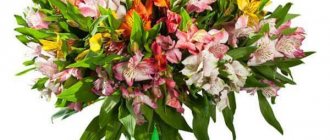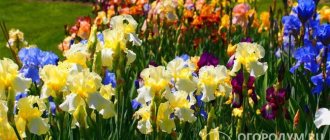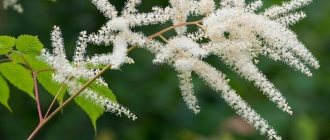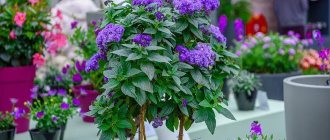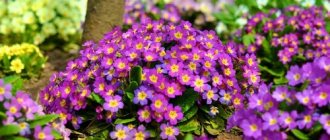Yoshta is a hybrid crop that has become popular because of its hardiness and unpretentiousness. This plant rarely gets sick and grows into dense hedges. Let's learn about all the features of this hybrid, how to plant and propagate it.
Yoshta
There are no thorns on the yoshta
Yoshta is low maintenance
The history of the hybrid
At the beginning of the 20th century, enthusiastic breeders decided to cross black currants with gooseberries in order to obtain a hybrid that borrowed the best qualities from its ancestors.
Breeders expected to obtain a crop:
- without thorns;
- high-yielding;
- with vitamin berries;
- resistant to terry and bud mites.
Breeders from several countries tried to create a hybrid - Germany, USA, Hungary, Sweden. In Russia, I.V. Michurin was engaged in this work. But all attempts ended in failure - the hybrids either died or were infertile.
The result was achieved only in 1970, when genetic engineering, radiation and chemicals began to be used in breeding work. The creator of the hybrid was the German breeder Rudolf Bauer.
The hybrid got its name - joshta - by adding the first letters of the words Johannisbeere and Stachelbeere, which translated from German means currant and gooseberry, respectively.
Yoshta is a hybrid obtained by crossing the following crops:
- black currant;
- splayed gooseberries;
- common gooseberry.
What is it about?
Yoshta is a shrub obtained by crossing gooseberries with currants (a dark variety of the berry was used). It was first bred in Germany, and the author was Bauer, a prominent breeder of that time. The plant, popular these days, shows good resistance to sub-zero temperatures in winter and is not susceptible to a number of widespread pests. In Western European countries, gardeners fell in love with the shrub several decades ago, and recently it has been gaining a strong position in the agricultural market of our country. Among Europeans, yoshta is valued both by those who seriously engage in gardening and by those who like to decorate their yard with an aesthetic plant with tasty fruits.
Eshka berries, beautiful in numerous photos, were given to humanity for a reason. For the first time, the idea of crossing gooseberries with currants came to breeders a very, very long time ago, but the experiments did not produce worthwhile results. Many years and a considerable amount of work, time and resources were invested in order to achieve the desired result. Two not very similar plants were crossed in a variety of ways and methods, so that the result had the best qualities of the original material. The task of the breeders was to develop a variety of berries that is resistant to terry, which is not afraid of mites, while at the same time achieving an increase in the size of the fruit. Only a result that ensured a good harvest could be considered successful.
Description of culture
Yoshta significantly surpassed its ancestors in size. From a distance, the bush looks more like a currant - due to its dark berries. But upon closer examination, it turns out that the hybrid has a lot of differences from both ancestors.
Appearance
The main feature of yoshta is its dense and tall bushes with a wide crown, which is what allows the plant to be used to create hedges.
What does the bush look like:
- height – up to 2.5 m;
- number of branches – up to 20 pieces;
- roots are powerful, reach a depth of 35-40 cm;
- flowers - five-leaved, bright yellow or burgundy (color depends on the variety);
- leaves – large, glossy;
- the buds are collected in inflorescences, with which the branches are densely strewn;
- the fruits are collected in clusters, each with 4-6 fruits.
Yoshta has few branches, so they do not have to be trimmed all the time, unlike many other garden shrubs. Flowering lasts 14-18 days, then berries appear.
Berries
Yoshta begins to bear fruit in the second year of life, reaching maximum fruiting in 3-4 years. The first berries are harvested in July, and the full harvest begins in late July or early August.
The average yield of yoshta is 4-6 kg per bush. But there are varieties that yield 10-12 kg. Yoshta berries are securely attached to the petioles. The fruits have a rather pleasant aroma, vaguely reminiscent of currants, and there are small seeds inside.
Fruit characteristics:
- weight – 4-6 g;
- shape – elongated, oval or round;
- the skin is thick, glossy, black-violet in color;
- taste – sweet, with a hint of nutmeg.
I want it for myself!
If you have decided to check from your own experience what eshta is, why it is good, how it is grown and whether it produces large yields, you should start by studying the conditions for planting the bush. Planting it on a personal plot does not pose a serious difficulty, so even an inexperienced gardener can choose such a plant without fear of the imminent death of the new product.
As can be seen from the descriptions and photos published in special reference books, yoshta is a berry that is often planted not so much for the sake of the harvest, but for the purpose of obtaining a cosmetic effect. The plant is perfect as a hedge and creates a beautiful cosmetic and decorative effect. The site will look impressive and attractive at any time of the year due to the densely intertwined and powerful branches, at the same time, protection from strangers and even just the glances of passers-by will be no less reliable than a classic fence.
When planning to plant yoshta as a fencing plant, you should plant the plants at a distance of 40 cm. When combining the shrub with other plants, observe meter-long pauses. When planning to plant yoshta in order to obtain a productive bush, it is better to prefer single plantings. It is worth preparing for care in advance: plants growing singly require regular pruning to give shape.
Advantages and disadvantages
The hybrid bred by the Germans turned out to be not as good as the breeders dreamed of, who wanted to get the ideal crop. Yoshta, along with its advantages, has a number of disadvantages.
Yoshta contains less vitamin C than currants, but 2-4 times more than gooseberries - approximately 1000 mg per 100 g of berries.
Pros:
- powerful bushes can serve as a hedge - dense and not requiring special care, including special pruning;
- ease of picking berries due to the lack of thorns;
- resistance to diseases and pests;
- sweet taste of fruits with slight sourness;
- long-lasting and transportable fruits;
- rapid adaptation to the environment;
- low maintenance requirements;
- ripe berries continue to stay on the branches and do not fall to the ground.
Minuses:
- low yield (half that of gooseberries);
- genetically modified product - for many gardeners this factor is important;
- the bush requires significant space to grow;
- refers to partially pollinated plants.
You can see what Yoshta looks like, as well as learn about its advantages, in the following video:
Reproduction of yoshta by vegetative method: how to quickly get new plants
If you have one yoshta bush in your garden, but it’s not enough for you, you can get a lot of seedlings in a short time by rooting the cuttings. Vegetative propagation of yoshta using this method gives good results. Even novice gardeners can prepare cuttings, and this can be done both in autumn and summer. Chubuki quickly grow roots, develop well, and next season you will have a whole yosht nursery. Let's take a closer look at how to do this correctly, because each method has its own little nuances.
Yoshta: benefits and harm
Breeders sought to create a hybrid whose berries carried the beneficial properties of both “parents” - currants and gooseberries. And to a certain extent they succeeded.
Yoshta fruits contain:
- ascorbic acid – increases immunity, restores tissue, rejuvenates the body;
- rutin is a powerful antioxidant that slows down aging and improves vascular elasticity;
- potassium – normalizes the functioning of the musculoskeletal system, nervous and vascular systems, activates brain activity;
- iron – gives the body energy;
- iodine – normalizes hormonal levels.
Yoshta fruits also contain a lot of copper, pectin, glucose, sucrose, phytoncides and natural acids.
Useful properties of yoshta berries:
- increase hemoglobin;
- accelerate metabolic processes;
- promote the formation of collagen (the elasticity and firmness of the skin depends on it);
- normalize the functioning of the gastrointestinal tract;
- prevent periodontal disease, pain in bones and joints;
- have anti-inflammatory and bactericidal effects;
- normalize blood pressure;
- promote weight loss.
Yoshta can be consumed by diabetics, as it has a low sugar content.
Contraindications:
- individual intolerance and allergic reaction;
- tendency to thrombosis;
- ulcer, gastritis, colitis, Crohn's disease.
If a person is allergic to gooseberries or currants, it is better not to eat yoshta.
Options
In the descriptions with photos of yoshta shrubs you can learn about the second option for plant breeding. It can reproduce by offspring if the mother bush is already quite large, can tolerate transplantation and even needs it. Each element isolated in this case must be checked for the quality of the root system. If the rhizomes are not branched enough, the young bush will not take root. Another important condition for successful reproduction is a healthy above-ground part.
The layering must be covered 12 cm with prepared soil. As the plant becomes stronger, similar volumes of soil are added.
Popular varieties
If you want to plant yoshta on your plot, keep in mind that there are several varieties of this hybrid crop. When choosing, take into account not only the characteristics of the varieties, but also the purposes for which the shrub is planted.
Popular varieties of yoshta:
- Yohini. Height - 2 m, width - 1.5 m. The leaves look like currants, but do not smell. The fruits are sweet, round, with a dessert taste. Productivity – 10 kg per bush.
- Moro. The variety tolerates frost well. Height – 2.5 m. Very productive variety – up to 12 kg per bush.
- Rext. Frost-resistant variety, resistant to bud mites and diseases. Height – up to 1.5 m. Leaves are similar to gooseberry leaves. The fruits are black, round, weighing 3 g. Up to 5 kg of berries are harvested on one bush.
- Chrome. This variety has thick branches. Height – up to 2.5 m. Gooseberry leaves. Kroma has an interesting feature - first the berries have a gooseberry taste, and then currant.
- EMB. Drought-resistant variety. Height – 1.7 m, width – 1.8 m. The fruits weigh 5 g. The taste is reminiscent of gooseberries. Possible damage by kidney mites.
What are people saying?
According to reviews, yoshta produces a bountiful harvest, even if the plant is barely cared for. Gardeners who responsibly water and regularly fertilize all crops planted on their own plot note: yoshta grows quickly, in the fall it pleases with a large number of tasty berries, and there are practically no problems with diseases. The shrub is resistant to common pests, which means that it not only does not get sick, but also does not infect other crops, and does not retain danger within itself.
Yoshta is unpretentious and beautiful, at the same time pleasing to the eye, creates the appearance of an aesthetic area, makes it well-groomed, and produces an excellent harvest. Gardeners note the high quality of the foliage: many love green tea. Others note that brewed leaves help against colds even better than any currant. Considering that there are practically no reviews about the capriciousness of the plant, we can safely evaluate yoshta as a successful investment and a type of crop for which it is definitely worth setting aside a place on your own plot of land.
Features of planting and growing
To get the maximum effect from growing yoshta, all the nuances of planting are taken into account. In accordance with her preferences, a site is selected, then the soil is prepared and healthy seedlings are purchased.
Selecting a location
Most yoshta varieties grow successfully in areas with good lighting, without winds or drafts. But direct sunlight is contraindicated for the bush.
What soils does Yoshta prefer:
- Nutritious and loose, with good air and moisture permeability. Enriched with organic matter and high in potassium. The best soils for yoshta are chernozem and fertile loams.
- The culture grows well in moist, but not swampy soils. Dry soil leads to shrinkage of fruits and drying out of shoots, excess moisture leads to rotting of roots.
No special soil preparation is required for yoshta. But there are exceptions, when the site is overgrown with weeds and the land is extremely infertile. It is recommended to dig up the soil and add rotted manure - 15 kg per 1 sq. m. m.
Some nurseries that sell yoshta seedlings recommend not making special planting holes, adding humus and mineral fertilizers during digging in the fall - 1-2 buckets of organic matter and 1 liter of ash.
Selection of seedlings
The nursery sells seedlings with closed and open roots. In the second case, it is possible to assess the condition of the root system.
How to choose a good seedling:
- You cannot take specimens with dry and weathered roots - even if such plants take root, they will grow very slowly. The root system should be fresh and moist.
- Check the bark - pick it up slightly; if it is green, the seedling is alive. High-quality planting material has a smooth and elastic bark; if it is wrinkled, it means that the seedling was dug up a long time ago.
For seedlings purchased in the fall, be sure to cut off all leaves. Do this carefully so as not to damage the kidneys in the sinuses. Before transporting bare-rooted seedlings to the planting site, wrap them in a damp cloth and place them in a plastic bag.
It is better to take spring seedlings with unopened buds. Yoshta can be planted in containers throughout the growing season - as long as it is warm outside. But if it’s hot, the young plant is shaded with a protective screen.
Landing dates
There are no exact dates for planting yoshta, as they depend on the climate of the region and current weather conditions. In southern and middle latitudes, landing begins earlier, in northern latitudes - later.
Yoshta is planted in open ground twice a year:
- In the spring . Before the start of sap flow. It begins when the soil temperature at a depth of 0.5 m reaches +6 ... +9 ° C. In temperate latitudes this period occurs in April.
- In autumn. It is recommended to plant in the first weeks of September.
Preparing the planting hole
The pits are prepared 2-3 weeks before the expected planting of seedlings. This allows fertilizers to dissolve well and be absorbed into the soil.
How to prepare planting holes:
- Dig holes measuring 50x50x50 cm. Leave a distance of 1.5-2 m between adjacent holes if the crop is planted for fruits, if for a hedge - 0.5 m.
- When digging a hole, set the excavated soil aside. The top fertile layer of soil will be needed to cover the roots.
- Prepare a mixture of a bucket of compost/humus, 100 g of superphosphate, 500 ml of wood ash and fertile soil. Mix the composition thoroughly.
- If the soil is sandy, add clay to the planting hole to create a layer of 2-3 cm. If the soil is clayey and heavy, add 2.5 liters of coarse-grained river sand, and most importantly, make drainage, for example, from broken bricks. Drainage thickness – 15 cm.
Landing
If the place has been prepared in advance and the weather is favorable, proceed to planting the seedlings in the ground. But don't forget to prepare them first.
If the seedling is grown in a container, place it in water for 10-20 minutes. Soak specimens without an earthen ball - with an open root system - in water for 24 hours, and immediately before planting, dip them in a liquid manure-clay mixture.
The procedure for planting yoshta in the ground:
- Inspect the root system of the seedlings. Trim dry and damaged roots. Make transverse cuts so that the wounds are smaller. Try to leave as many absorbing roots as possible.
- Pour 2-3 buckets of water into the hole.
- When the water is completely absorbed, place the seedling in the center of the hole and straighten its roots, placing a support nearby.
- Spread the roots of the seedling and place it so that the root collar is a couple of centimeters above ground level.
- Tie the yoshta to the support with soft twine and fill the hole with fertile soil obtained by digging. Compact the soil a little and water again.
- Shorten the shoots, leaving no more than 3-4 buds.
If planting is done incorrectly, there will be voids between the roots of the seedling, which will subsequently cause soil settlement. This will lead to the deepening of the root collar, it can resist and the plant will die.
An experienced gardener will tell you about the rules for planting yoshta in the following video:
Minerals needed for plant growth
In order to grow, bloom and form seeds, the plant needs minerals in addition to water. The plant needs more of some minerals, less of others. From water the plant receives large quantities of nitrogen, phosphorus and potassium salts. Nitrogen (N) is the most important component of proteins, phosphorus (P) plays a central role in the energy metabolism of the cell; both substances are part of the hereditary substance. Potassium (K) is required primarily for respiration and photosynthesis. For normal growth, the plant also needs magnesium, calcium, iron and sulfur.
It is common knowledge that plant growth is promoted by nitrogen, flowers and fruits will not ripen without sufficient phosphorus, and fleshy root vegetables require large amounts of potassium. Of course, everything should be in moderation, and you cannot do without some necessary substance. Too high a content of these substances in the soil is harmful to plants, and therefore it is necessary to follow the recommendations for applying fertilizers.
Compost is the safest fertilizer for the natural environment
Rules of care
Caring for yoshta is not difficult even for the most inexperienced gardeners. The main activities are fertilizing and watering. Periodically, yoshta bushes have to be loosened, sprayed and pruned.
Watering
Yoshta loves moisture and this often becomes its disadvantage - if the summer is dry and hot, and there are interruptions in watering. Water deficiency leads to stunted growth and development.
How to water yoshta:
- It is advisable that the soil is constantly slightly moist, so in hot summer conditions, water the plant heavily. The soil should be soaked to a depth of 40 cm.
- Pour water so that it does not fall on the bush. Dig a ditch 10-15 cm deep and 20 cm wide around the perimeter of the tree trunk circle, into which you pour water.
- The frequency of watering depends on the weather and the availability of mulch. Water norm – 30 liters per 1 sq. m.
After watering, loosen the soil as soon as it dries out a little. If the ground is mulched, then loosening is not necessary.
Feeding
Yoshta can grow without fertilizing, especially if it is used as a hedge. But, if the gardener expects a good harvest, the crop is fed several times during the season.
How to feed Yoshta:
- In the spring, after the snow melts, apply nitrogen-containing fertilizer - urea or saltpeter (40-50 g per 1 sq. m). Or superphosphate (30 g) in combination with potassium sulfate (20 g). These fertilizers will ensure enhanced growth of green mass.
- After flowering, around the beginning of summer, add a solution of potassium monophosphate - 10-15 g per 1 square meter. m. In summer, yoshta can receive additional nutrition from organic mulch.
- In July, feed the bushes with organic matter - mullein or bird droppings (1 liter per 1 sq. m).
- In the fall, after the berries are collected, add superphosphate (30 g per 1 sq. m) or humus (2 buckets per 1 sq. m).
As the bush grows, the doses of fertilizing change slightly. Starting from the 4th year of life, more potassium fertilizers are applied and less phosphorus fertilizers.
Pollination
Near Yoshta, gardeners often plant a currant or gooseberry bush for cross-pollination and good fruiting. Yoshta is a partially self-fertile plant, so the harvest depends on the presence of pollinating plants.
For yoshta, the best pollinators are representatives of the parent forms - various varieties of gooseberries and black currants.
Pruning and shaping the bush
Yoshta does not need pruning, but gardeners still have to deal with this procedure.
Trimming Features:
- In the spring, sanitary pruning is carried out - damaged, dry and diseased branches are removed. Healthy shoots are shortened if they are slightly frozen. The procedure is carried out in April, before the buds open.
- Shoots that have reached 7-8 years of age are shortened, leaving 6-8 buds.
- In the fall, sanitary pruning is repeated. This is done immediately after the plant goes into a dormant state - in October-November. Remove broken branches, as well as shoots affected by glass beetles - the larvae of this butterfly gnaw out the shoots from the inside.
Yoshta grown for hedges is pruned to form the desired shape.
Mulching
Gardeners call covering the soil with natural materials mulching. Thanks to this simple agrotechnical measure, it is possible to solve several problems at once.
Advantages of mulching:
- by reducing water evaporation, the frequency of watering is reduced;
- the growth of weeds slows down - under a layer of mulch they grow much more slowly;
- overheating of the roots is prevented if light-colored mulch is used;
- If the soil is mulched with organic matter, the plant receives additional nutrition from its overheating.
Mulching is used not only during the growing season, but also for wintering. A thick layer of mulch is spread over the soil near the trunks, preventing it from freezing, weathering and washing away.
Gardeners use a variety of materials as organic mulch. The soil is covered with grass, hay, straw, shredded paper, sawdust, cut cardboard, compost, bark, wood chips or leaves.
Inorganic materials are also used for mulching. They do not decompose and do not serve as additional nutrition for plants. But they do not attract slugs, mice and other pests.
Examples of inorganic mulch:
- gravel;
- pebbles;
- sand;
- geotextiles;
- non-woven polypropylene materials.
Reproduction
Yoshta reproduces well by vegetative methods - division, layering and cuttings. Each gardener chooses the method that seems most convenient and effective to him.
By division
Yoshta is propagated by division in the fall, and only when transplanted to a new place.
Reproduction order by division:
- Dig the bush out of the ground. Shake soil off the roots.
- Using pruning shears or a sharp knife, cut the bush into pieces. Moreover, each division should have 1-2 stems and well-developed roots.
- Sprinkle the cuts with crushed charcoal.
- Plant parts of the divided bush in prepared holes.
By layering
Yoshta is propagated by horizontal and vertical layering. This is done in the spring, when the soil warms up well.
Reproduction order by layering:
- Bend a one- or two-year-old side branch to the ground into prepared furrows (depth - 10 cm). Secure with metal staples.
- Cover the branches with nutrient soil and pinch the tops.
- Hill up the shoots several times as they grow.
- In the fall, disconnect the cuttings from the mother bush and replant them in a permanent place.
Cuttings
To propagate yoshta, green or lignified cuttings are used. The latter are cut from 2-4 year old branches at the end of September. The length of the cutting is 15-20 cm. The number of buds is 5-6 pieces. For harvesting, the upper, unripe parts of the shoots are used.
Propagation order by cuttings:
- Cut off the shoots. Make the lower cut at an angle of 45 degrees, the upper cut 1 cm above the bud.
- Plant the cuttings in the dug up bed. There should be partial shade here. Add sand or vermiculite to clay soils - a bucket of 1 square meter. m.
- Stick the cuttings into the soil at an angle. The intervals between shoots are 10-15 cm. Water and sprinkle with peat/compost to retain moisture.
Take care of the planted cuttings - water, loosen, remove weeds. In spring, the cuttings begin to grow rapidly. Rooted seedlings are grown and transplanted to a permanent place.
Preparing for winter
In regions with warm winters, yoshta is not covered for the winter - it survives the winter safely, as it has excellent frost resistance. In areas with harsh winters, the crop has to be insulated.
How to prepare a yoshta for wintering:
- Water the shrubs thoroughly after harvesting.
- Mulch the tree trunk circle with a thick layer of mulch (7-8 cm).
- 2-3 weeks before frost, cover the trunks of shrubs with covering material that allows air to pass through (for example, burlap or agrofibre).
- When the snow falls, rake the snowdrifts to the trunks of the bushes.
Why is this necessary?
The shrub in question has gained popularity in our country relatively recently, but many already know the beneficial qualities of yoshta berries. Healers advise using the fruits for disorders of the gastrointestinal tract. It is believed that the active components that the plant is rich in stimulate blood flow. Some claim that it cleanses the body of radioactive compounds. The berries, which are beneficial for human health, are recommended for vitamin deficiencies and to alleviate the manifestations of nervous disorders.
The beautiful yoshta in the photo pleases owners not only with its aesthetic appearance in reality. The bush produces a bountiful harvest of tasty fruits, from which you can make jam or compote for the winter. Some people prepare marshmallows, while others really like canned yoshta berries. It is permissible to prepare ice cream from the ripe fruits of the plant and puree the berries with sugar. In a word, any options for preparing sweets and drinks that are available to owners of gooseberries and currants also apply to those who have planted yoshta on their plot.
Yoshta is rich in ascorbic acid, although it contains slightly less of this beneficial vitamin than black currant. Vitamin R was found in the fruits of the shrub. Yoshta provides the human body with antioxidants. It is useful to eat berries fresh and processed.
Diseases and pests
One of the goals of breeding yoshta is high immunity to diseases and pests. But even this shrub is not immune from all diseases, especially with poor care.
The most dangerous diseases of Yoshta:
- Anthracnose. The main sign of the disease is red and white spots on the leaves. Treatment - treatment with Bordeaux mixture.
- Powdery mildew. Usually affects weak shrubs. Treated with Fitosporin.
- Terryness. This disease is caused by a virus. It cannot be treated and appears over time – within 4-5 years.
- Mosaic. The leaves become covered with yellow and brown spots. The bush dries up and dies. There is no cure for a viral disease.
- Rust. Rusty spots form on the leaves. Affected bushes dry out and leaves fall off. They are treated with Fitosporin.
Most diseases can be prevented by preventative spraying. It is recommended to treat the bushes in early spring - before the buds open, and in the fall - after the leaves fall.
Means for preventive spraying:
- urea – 70 g per 1 liter of water;
- Bordeaux mixture - 1% solution;
- copper sulfate – 10 g per 1 liter.
Pests that affect yoshta:
- Kidney mite. This is the most dangerous pest; it transmits viral diseases. The inflated buds are torn off and burned - ticks live in them.
- Aphid. Insects suck juices from leaves. They curl and the branches develop poorly. The bushes are sprayed with Fitoverm.
Is the bush sick?
In general, yoshta is much more resistant to pests and diseases than gooseberries and currants. However, some risks remain. Terry and mosaic are among the incurable diseases: diseased specimens are uprooted and burned. If infected with a fungus, the bush should be treated with a special compound. The stores have effective drugs “Topaz”, “Fundazol”, “Bayleton”. To avoid problems with diseases, preventive treatment of the site and strict adherence to plant growing techniques are recommended. If there is a high risk of pests, the bushes should be treated with Akarin or Kleschevit.
Harvesting and transportation
The berries ripen gradually, but their mass collection begins in mid-July, when the fruits reach biological maturity. Harvest in dry weather. The best time to pick berries is morning or evening. The berries are collected in a container made of plastic or wood.
Yoshta fruits, having a dense skin that is not prone to cracking, tolerate transportation well. They do not choke, do not leak juice and do not lose their presentation. The main thing is not to put too large a layer of berries in the container, 15 cm is enough.
Features of the use and storage of yoshta:
- Berries are eaten fresh and processed. Jams, compotes and other preparations are prepared from them.
- To keep the berries fresh, use freezing. The optimal storage temperature is minus 16 °C. In such conditions, the berries are stored for about a year.
A hybrid of currants and gooseberries causes mixed reviews. Some gardeners speak of it with delight, others believe that yoshta is inferior to its parent forms - their taste, smell, appearance. In any case, this hardy plant deserves the close attention of our gardeners and summer residents.
1
0
Copy link
Is there an alternative?
Modern gardeners and gardeners know what eshta is. The shrub produces a tasty and abundant harvest, so it is highly valued. True, not everyone knows that this plant is not the only option obtained from gooseberries crossed with currants. For example, the bushes of Rike, Krom, and Zvyagina are quite interesting. All of them are distinguished by good harvest quality and relative undemanding living conditions.
It is impossible to say with certainty what exactly yoshta is closer to - gooseberries, currants. Such disputes among non-professionals have not subsided since the moment the plant became widely available. Agronomists, in turn, assure: the shrub has pronounced positive qualities of both original berries, and it is impossible to say which of them is more similar.
Trimming
One of the attractive advantages of yoshta is the fact that it does not require crown formation. It is advisable to organize such events solely for sanitary purposes as necessary.
in spring
It is recommended to begin pruning shrubs in spring before the sap begins to flow along the trunk of the plant. To carry out the work, it is necessary to shorten diseased shoots to healthy areas and cut off branches that are practically lying on the ground. And it is also necessary to remove all damaged, broken and frozen branches during the winter. When pruning a plant that is 7–8 years old, it is necessary to leave part of the branches with about 6 buds on them.
in autumn
When the leaf fall ends and the trees and shrubs enter the dormant stage, you can prune the plant.
The complex of upcoming measures is very small - it is necessary to shorten diseased and injured shoots to healthy areas, as well as sections that contribute to thickening of the crop. Undamaged branches should be shortened by only 1/3 of their length.
Preparing for winter
Growing yoshta in regions with warm climatic conditions does not require special measures to cover the bushes to prevent them from freezing - the hybrid has excellent frost resistance and is therefore able to safely withstand harsh climates. In northern regions with a predominance of cold winters, the crop will have to be insulated.
To do this, you need to carry out the following manipulations:
- at the end of the harvest, the bushes need to be watered abundantly;
- after a cool “shower” it is necessary to mulch the tree trunk circle;
- Next, it is necessary to cover the treated layer with a material that allows air to pass through well (agrofibre or burlap).
Any varieties of the Yoshta culture, according to the developed and described instructions, reviews of gardeners with illustrated photos, in regions with a cold climate are best protected by natural sheltered snowdrifts formed under the bushes.


